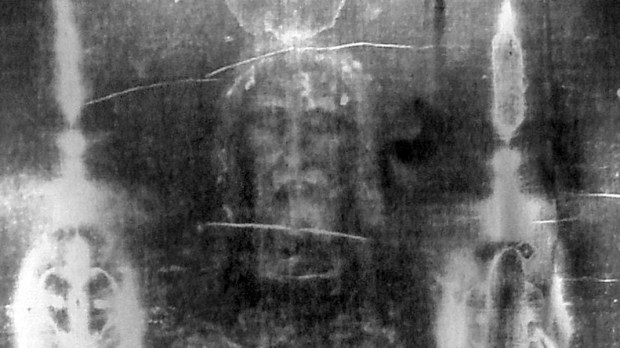A venerated object of Christian history has been shrouded in mystery for centuries, but a new website has been launched in hopes that more people around the world, including researchers, will be able to gain better insights into it.
That object is the Shroud of Turin, believed by many to be the burial cloth of Christ. Housed in the Cathedral of Turin since the 16th century, it has been an object of fascination over the centuries, and the subject of controversy.
In 1978, scientific photographer Vernon Miller was part of the Shroud of Turin Research Project, which spent more than 100 hours conducting tests on the shroud. Miller attempted to improve on prior photography of the long rectangular cloth. His photos have now been digitized and published at ShroudPhotos. Viewed online, they can be magnified for a look at finer detail — for example, to examine the weave of the cloth.
Catholic News Agency reported that from 1977 to 1981, a team of physicists, chemists, pathologists, and engineers from universities and U.S. government laboratories conducted the Shroud of Turin Research Project, which concluded that “the shroud image is that of a real human form of a scourged, crucified man. It is not the product of an artist. The blood stains are composed of hemoglobin and also give a positive test for serum albumin. The image is an ongoing mystery and until further chemical studies are made, perhaps by this group of scientists, or perhaps by some scientists in the future, the problem remains unsolved.”
The project’s final report added that “no pigments, paints, dyes or stains” were found on the shroud’s fibers, adding that “it is clear that there has been a direct contact of the Shroud with a body, which explains certain features such as scourge marks, as well as the blood. However, while this type of contact might explain some of the features of the torso, it is totally incapable of explaining the image of the face with the high resolution that has been amply demonstrated by photography.” “The scientific consensus is that the image was produced by something which resulted in oxidation, dehydration and conjugation of the polysaccharide structure of the microfibrils of the linen itself. Such changes can be duplicated in the laboratory by certain chemical and physical processes. A similar type of change in linen can be obtained by sulfuric acid or heat. However, there are no chemical or physical methods known which can account for the totality of the image, nor can any combination of physical, chemical, biological or medical circumstances explain the image adequately.”
The website offers a quick tour of 21 of Miller’s photos, accompanied by basic descriptive information to help those unfamiliar with the Shroud better understand the blood marks and image of the cloth. An in-depth tour categorizes photos by color, size, and image content.
“The astonishing image of the Man of the Shroud tells us much more than what is written here; the image itself expresses its own unique visual story,” says the website’s creators and longtime Shroud researchers, Tom D’Muhala and Gilbert R. Lavoie, M.D. “Even after 40 years (1978-2018) of scientific, medical, forensic, and scriptural study, the photographs still draw our minds into seeking to understand more.”

